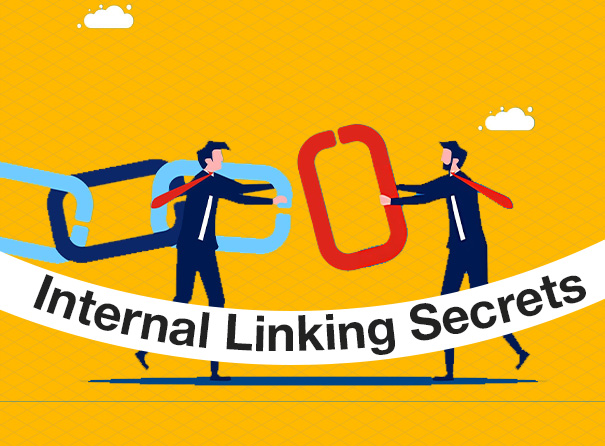TL;DR:- Service Area Business (SAB) SEO is essential for businesses without a storefront that serve customers at their location—like electricians, plumbers, or mobile cleaners. This guide outlines how to optimize your Google Business Profile, create location-specific pages, build local citations, and generate geo-targeted content. Prioritize mobile usability, consistent NAP details, and regular review generation. With the right SEO strategies, service-based businesses can rank prominently in multiple areas they operate—driving more calls, leads, and revenue.
This guide walks service-based businesses through everything needed to rank locally—without a storefront. From understanding the fundamentals to implementing proven strategies, you'll learn what Service Area Business SEO is, why it matters, and how to optimize your presence across service zones.
What Is Service Area Business SEO?
Service Area Business SEO (or SAB SEO) refers to the specialized optimization of businesses that serve clients at their locations—like plumbers, cleaners, and HVAC technicians. Instead of a physical shop, these businesses define service zones that they travel to, and this geographic reach must be communicated to search engines effectively.
Optimizing for SAB SEO means targeting neighborhoods and ZIP codes rather than relying on a storefront address. This requires consistent messaging, precise Google Business Profile configuration, and location-based content that signals relevance to both users and search algorithms.
Types of Businesses That Qualify as Service Area Businesses
A Service Area Business (SAB) is a business that delivers goods or services directly to customers at their location rather than serving them at a storefront. Unlike brick-and-mortar stores, SABs don't require a physical office where customers visit. Instead, these businesses define specific geographic areas where they offer services.
If your business travels to customers or operates on-location, it’s classified as a Service Area Business by Google Business Profile (GBP).
Common Categories of Service Area Businesses:
Home Services: - These are the most common types of SABs. They typically provide repair, maintenance, or installation services at the customer's home.
PlumbersElectriciansHVAC (Heating, Ventilation, Air Conditioning) TechniciansRoofing ContractorsHandyman ServicesGarage Door Repair CompaniesCleaning Services: - Businesses that offer on-site cleaning solutions for residential or commercial properties.
House Cleaning ServicesCarpet and Upholstery CleaningWindow Cleaning ServicesPressure Washing ServicesProfessional On-Site Services: - These businesses offer specialized services that require visiting the client’s location.
Mobile Car DetailingPest Control ServicesLocksmithsLandscaping and Lawn CarePool Cleaning & MaintenanceHealth & Wellness Services: - Certain health and wellness professionals also operate as SABs, especially those who provide at-home care.
Mobile Massage TherapistsIn-Home Physical TherapistsHome Healthcare Providers (Nurses, Caregivers)Event & Specialty Services: - These businesses often travel to event venues or customer homes for specialized services.
Catering ServicesMobile Pet GroomingOn-site Photographers and VideographersParty Equipment RentalsMobile DJs and Entertainment ServicesWhy Every Service Area Business Needs Local SEO to Succeed
Traditional local SEO assumes a single address that drives walk-ins—but service businesses don't follow that model. Without storefront traffic, your digital footprint must demonstrate relevance in the zones you serve. Optimizing service area business Google listing correctly enables you to appear in map packs and local search results based on proximity alone.
Your visibility in local packs can directly translate into calls and conversions. Additionally, mapping your reach across multiple areas allows your business to scale its digital presence strategically—expanding beyond one location and earning local search visibility in every service zone.
How to Set Up Google Business Profile for a Service Area Business
Configuring your Google Business Profile for service area business is critical. Start by designating your business as a service area entity in your Google My Business settings. Instead of listing an address, select the specific cities or ZIP codes you serve. Choose accurate categories and services to help Google understand your offerings. Be sure to upload images of your team in action, and regularly respond to reviews to keep your profile active and trustworthy.
This setup is the foundation of all local search success—you can’t rank locally without it.
Bonus Read: - Want to dig deeper into improving your local visibility? Don’t miss our blog on How to Optimize Your Google Business Profile for Maximum Local Visibility—a step-by-step resource designed to help you get the most out of your GBP listing.
Key Local SEO Tactics for Service Area Businesses
- Creating On-Page SEO That Targets Service Zones: - Your website must mirror your digital local presence. Create dedicated landing pages for each service zone—e.g., “AC Repair in Miami Beach” or “Home Painting in Boca Raton.” These pages should feature location-specific content, optimized headers, and internal links that echo the geographic focus. Quality content—such as FAQs, service explanations, and testimonials—can support on-page SEO for service companies. Adding schema markup for service areas, service types, and reviews further signals relevance. The combination of targeted content and structured data lets search engines map your digital presence to physical service zones.
- Building Citations and Local Signals: - Citations—mentions of your business name, service zones, and contact info—are crucial. Make sure your business data is consistent across all directories (e.g., Yelp, Angi, Thumbtack) and matches what’s in your Google Business Profile. While you don’t list a storefront address, maintaining a unified NAP (Name, Address placeholder, Phone number) across sites supports trust. Local backlinks—like sponsorship listings or guest blogs in service-area media—enhance relevance even further. These citations for service area businesses validate your presence and build credibility in each zone you serve.
- Developing Location-Based Content: - High-performing SAB SEO strategies involve content tailored to specific service zones. Think about writing blog posts and guides that address local questions—such as “How to Winterize Your Home in Denver” or “Best Irrigation Tips for Phoenix Lawns.” This helps you attack keywords with local modifiers, adding relevance and increasing search visibility. When visitors search for service-related keywords plus a neighborhood, having localized content can make the difference between ranking or not. If you're managing multiple locations, using a toolset like top SEO tools tailored for B2B marketing to streamline your strategy and drive qualified traffic can help scale this approach faster and smarter.
- Ensuring Mobile and UX Optimization: - Local searches are often performed on mobile devices—especially when users need a service quickly. That’s why SEO tips for mobile businesses emphasize fast page load times, click-to-call buttons, and simple user interfaces. Your contact details and service zones should be prominent. Visitors should have everything they need within seconds: a phone button, hours of operation, and clear service descriptions. When mobile users can find and engage with your site easily, bounce rates drop and conversions rise.
How to Rank a Service Area Business on Google
Strategically optimizing for service area ranking involves a layered approach. Focus on GBP optimization, zoning content, strategic citation building, and reputation management (reviews). Monitor metrics through tools like Google Search Console and Business Insights to observe where impressions and leads are coming from.
If activity in certain areas is lagging, refresh your content, drive more reviews in that zone, or build links from local community platforms. Getting more local traction isn’t about national scale; it’s about deep relevance across zones. And for businesses that reach saturation in search, pairing with how to rank service area business on Google strategies helps convert visibility into real bookings.
Common Best Practices for Service Area SEO
Consistency and transparency are the keys here. Never list areas you don’t serve. Keep NAP data clean and accurate across directories. Encourage reviews from customers in each service zone and respond promptly—this not only builds trust with users, but with Google’s algorithm too.
Ensure your site architecture supports multiple service pages or sections, and refresh content periodically to maintain relevance. If you're ever unsure how to proceed, investing in expert SEO Services can help align your strategy toward growth without guesswork.
Final Thoughts
Service Area Business SEO is not optional for mobile service-oriented businesses—it’s essential. By optimizing your Google listing, focusing on service-zone content, managing accurate citations, and prioritizing mobile UX, you build a digital presence that ranks locally—even without a physical storefront.
With the right strategy and execution, service businesses can compete for visibility in multiple areas simultaneously. If you’d like help implementing this strategy, Inqnest Digital Marketing Agency is here to support you. Whether it’s content creation, local citations, or Google Business Profile optimization, this guide lays out the steps needed to attract local customers and scale your presence—region by region.











.png)









.jpg)


.png)
.png)
.png)

.png)
